What To Do When Encountering a Grizzly Bear While Hiking
As exciting as a grizzly bear encounter or sighting in the wild may be, it can also be a scary experience.
When outdoors, always keep in mind that we share our state, provincial and national parks with other creatures. And some of them, such as are mountain lions, black bears and grizzly bears, may be dangerous.
So, if you’re headed into bear territory, make sure that you know what to do when encountering a grizzly bear while hiking.
Grizzly Bear Safety While Hiking: What To Do & How To Behave
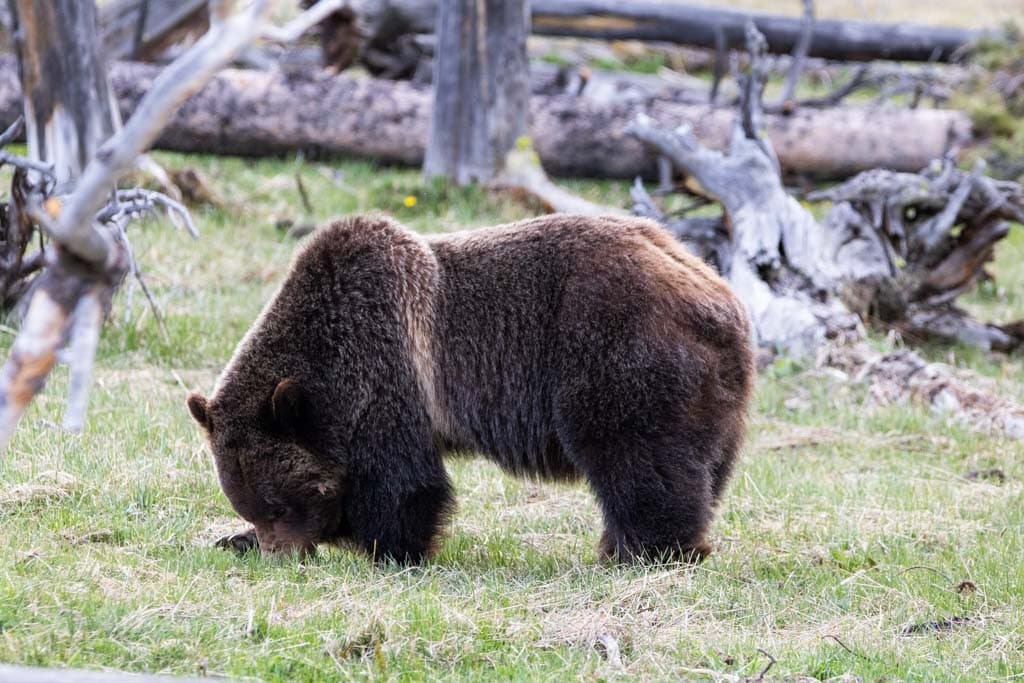
This post about what to do during a grizzly bear encounter contains affiliate links. You can read more about our Terms of Use / Disclosure here.
How To Avoid a Bear Encounter
As in many potentially dangerous situations, the first step is prevention. There are a few things you can do to avoid a grizzly bear encounter. There’s no better way to prevent an unpleasant encounter with a bear than avoiding the animals altogether.
Grizzlies try to avoid humans, too, often leaving the scene before someone realizes that they were around in the first place.
The vast majority of attacks happen when a grizzly bear gets surprised. And those particular attacks are always defensive. Therefore, always make noise while hiking in grizzly bear country.
Talk to each other, sing a song, whistle or hum loudly, clap your hands, wear a bear bell. Be noticeable.
This is particularly important when you’re hiking near rivers, in an area where a food source such as berries is present, or through a section with decreased visibility. Pay attention to what’s going on around you and never hike with earphones.
Try not to hike in bear country alone and silently. Hiking in groups is always better—you’ll be both louder and more imposing to bears.
- Make noise
- Pay attention to your surroundings
- Hike in group and stay together
- Keep pets on a leash at all times
- Hike on marked trails and during the daytime
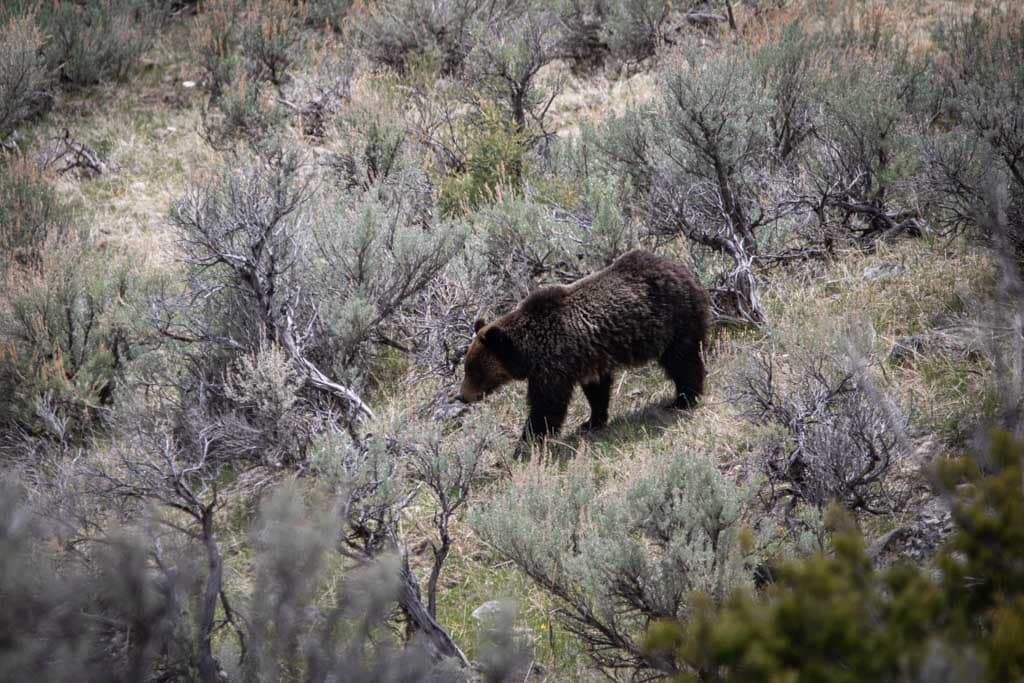
Book Recommendation:
Backcountry Bear Basics: The Definitive Guide to Avoiding Unpleasant Encounters
Black Bear or Grizzly Bear?
What to do when encountering a bear while hiking depends entirely on which species of bear it is. Is it a black bear or a grizzly bear?
Both species behave differently and their response to an encounter is not the same. It is, therefore, critical to be able to determine what kind of bear you’re dealing with.
Black Bears
The American black bear lives all over the United States and Canada.
It is the smallest of the three bear species found in North America—the polar bear is number three and by far the largest. Extremely adaptable, they’re present all over the country, in at least 40 states.
You can recognize a black bear by its straight face profile, small claws, large protruding ears and lack of shoulder hump. Although they’re called “black”, black bears can also be dark brown, brown, blue-ish black and cinnamon.
Grizzly Bears
A subspecies of the brown bear, grizzly bears are some of the most-feared animals in America. This is, of course, unjustified.
Yes, they may be huge and imposing, powerful enough to cause major injuries to any other animal, but they can also be gentle and curious.
Grizzly bears are, on average, much larger than black bears. Their most distinguishing body features are their large claws and clearly visible shoulder hump. Both these characteristics help grizzlies dig for food.
Additionally, grizzly bears have short, rounded ears and a so-called “dished” face profile—a nose that somewhat sticks out from their face.
While they used to live all over North America, their range is now limited to Alaska, Canada and a few of the lower 48 states. With a healthy population of 30,000 individuals, Alaska is home to the most grizzlies of any state or province on the continent.
There are merely 1,500 grizzlies left in the lower 48 states, 800 of which live in Montana. Another 600 call Wyoming’s Yellowstone-Grand Teton area home, arguably the best national parks for wildlife watching, while Idaho has about 100 grizzly bears.
A handful of them survive in the wilderness of the North Cascades in Washington State.
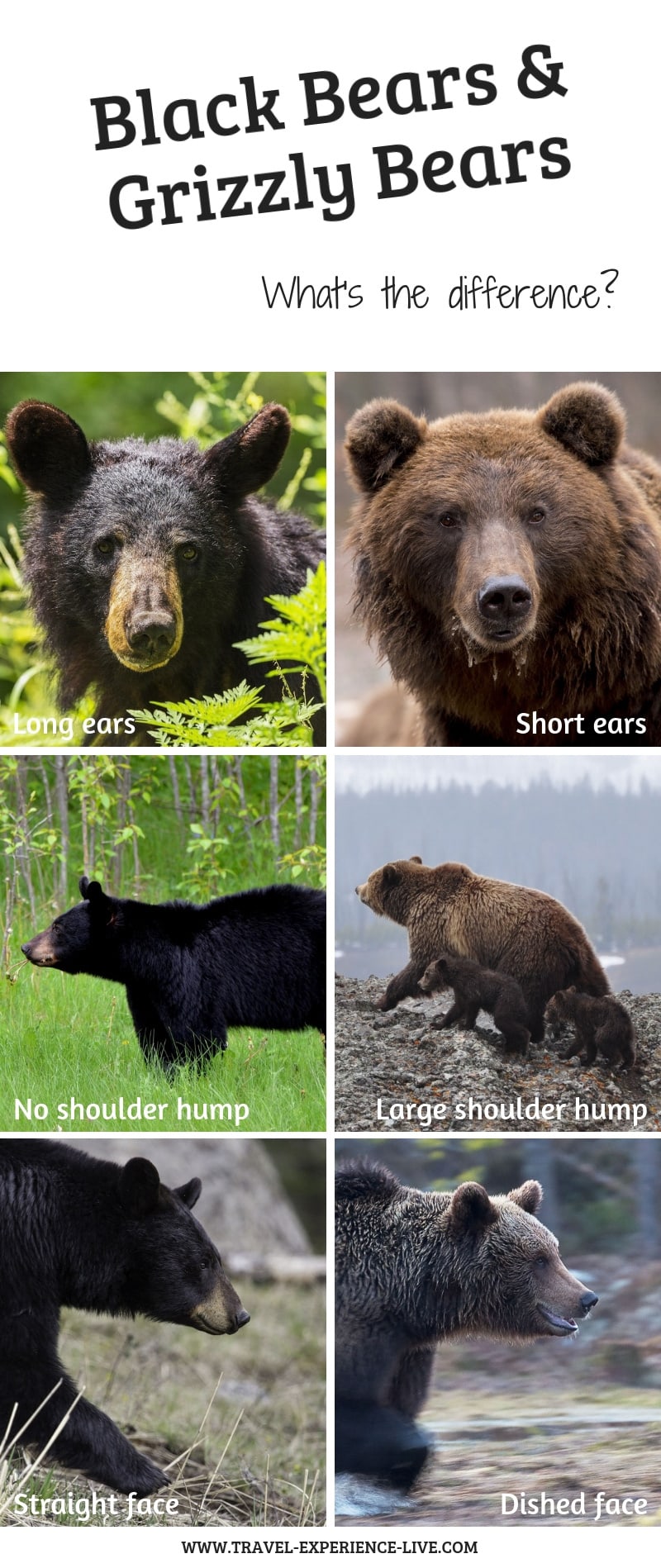
What To Do When Encountering a Grizzly Bear
Grizzly bear encounters are an entirely different experience from black bear encounters. One, the animals are much larger. Two, they act more aggressively. Three, they often respond differently to surprise encounters.
When dealing with grizzly bears, too, it is important to evaluate its behavior. The body language of a bear helps you to determine its mood.
A bear that stands on its hind legs or approaches you is not (necessarily) an act of aggression, often simply of curiosity. When that happens, the bear may just want to check out what you are.
Just like with black bears, clapping of jaws, swatting of front paws, swaying of their head, huffing, blowing and snorting are all signs of agitation.
Similar to dogs, laid-back ears and a lowered head indicate aggression. In those cases, you should leave the area as fast as you safely can, without running.
The major difference between black bears and grizzly bears is that defensive grizzlies may actually attack. In fact, the vast majority of grizzly bear attacks are by a defensive bear that has been surprised, is protecting cubs or perhaps food. Predatory grizzly bear attacks do happen, too, although they are pretty rare.
Let’s see what to do when encountering a grizzly bear in both cases.
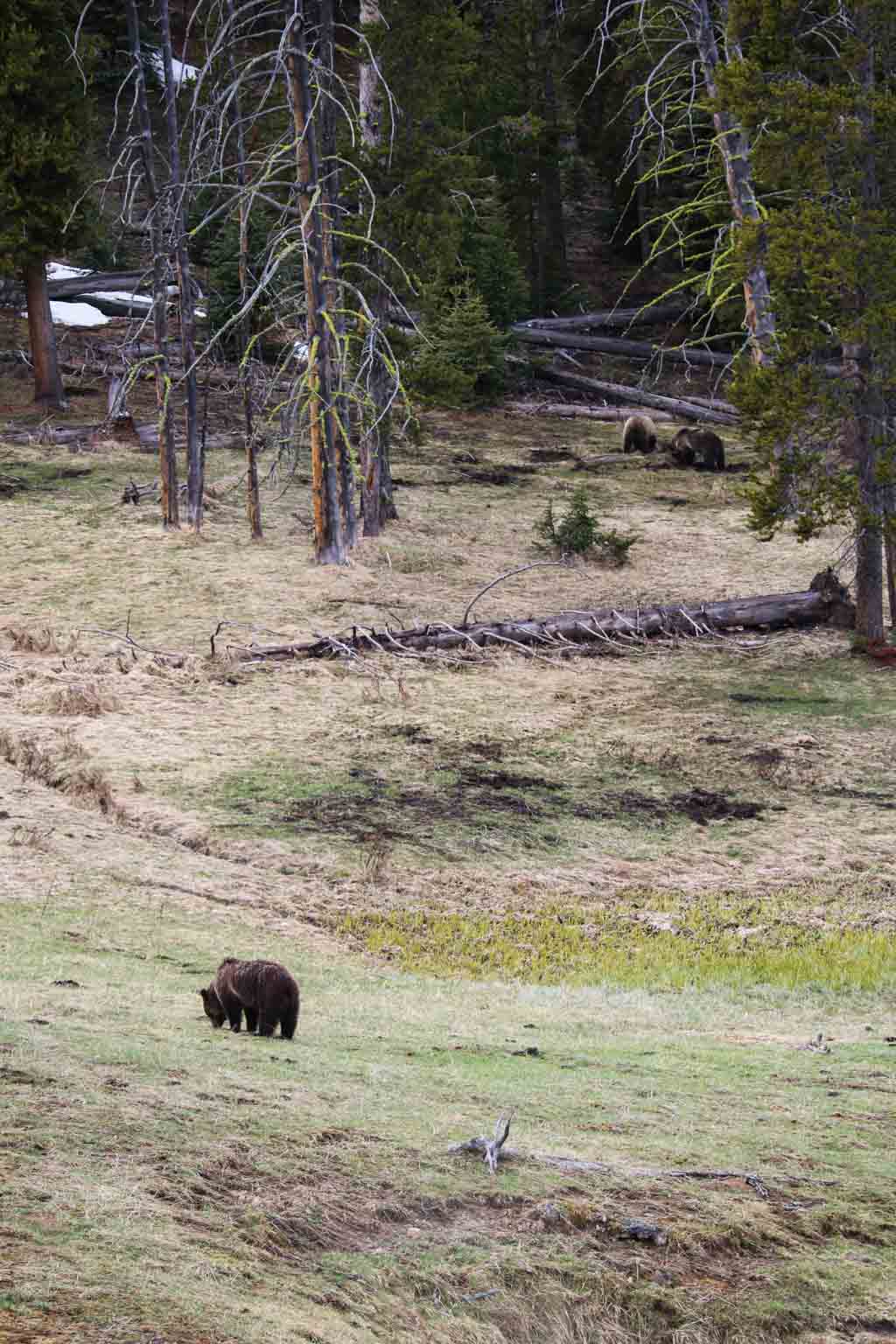
Defensive Grizzly Bear Encounters
A defensive confrontation almost always happens during a surprise grizzly bear encounter. Remain calm and do not run. Most grizzly bear charges are bluff charges.
- Stand your ground and talk to the grizzly bear in a low, monotone voice, allowing it to identify you as human.
- Don’t scream or yell at the bear. This may come across as threatening.
- Wave your arms, making yourself appear as large as possible. Move to higher ground if possible.
- Avoid direct eye contact, but use your peripheral vision to watch the animal.
- Pick up small children.
- Keep your backpack on, it may offer protection for your back in the extremely unlikely case of an attack.
- Get your bear spray ready by removing the safety lock.
- If the bear does not approach you, back away slowly, preferably at an oblique angle. Bears consider sideways movements non-threatening.
- If the bear does charge you, use your bear spray, preferably before it is within 25 feet (6 meters).
In case of physical contact with a grizzly bear, your final response should depend on whether it’s a defensive or aggressive attack. First, however, always play dead.
Note that, as hard as that may be, it’s important not to drop to the ground before the bear is practically on top of you. If you simply lie down when you see a grizzly, it may grow curious as to what’s going on with you. Stand your ground as long as possible.
- With your backpack on, lay flat on your stomach and clasp your hands behind your neck.
- Spread your legs and use your elbows and toes to prevent the bear from rolling you over. If it does roll you over, keep rolling until you’re back on your stomach.
- As difficult as it may be, remain as calm and still as possible until the attack stops. Fighting back usually greatly increases a grizzly bear attack.
- Do NOT fight back!
- Typically, a defensive grizzly bear will leave once it thinks the threat is gone. Wait until you’re absolutely sure the animal has left area before getting up and seeking help.
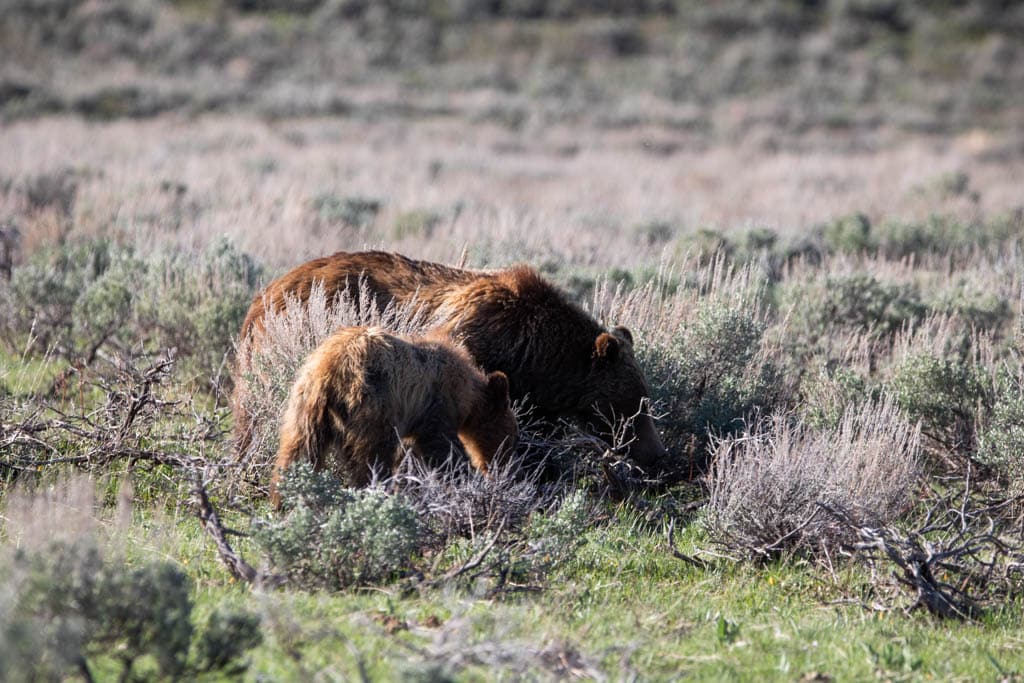
Aggressive Grizzly Bear Encounters
Predatory grizzly attacks are rare, but have happened in the past. You should consider any bear that follows, continues to approach or appears to stalk you as one with predatory motives.
Grizzlies that harass you in your tent or at your campsite should also be regarded as a predatory threat. Your response should be aggressive as well.
- In the rare event that a perceived defensive grizzly attack does persist, it is time to fight back. Vigorously. Use whatever you can find to hit the bear in the face and on its nose.
- If a stalking grizzly bear doesn’t respond to aggressive actions like throwing rocks, yelling and banging pots together, get your bear spray ready and use it.
- Fight back.
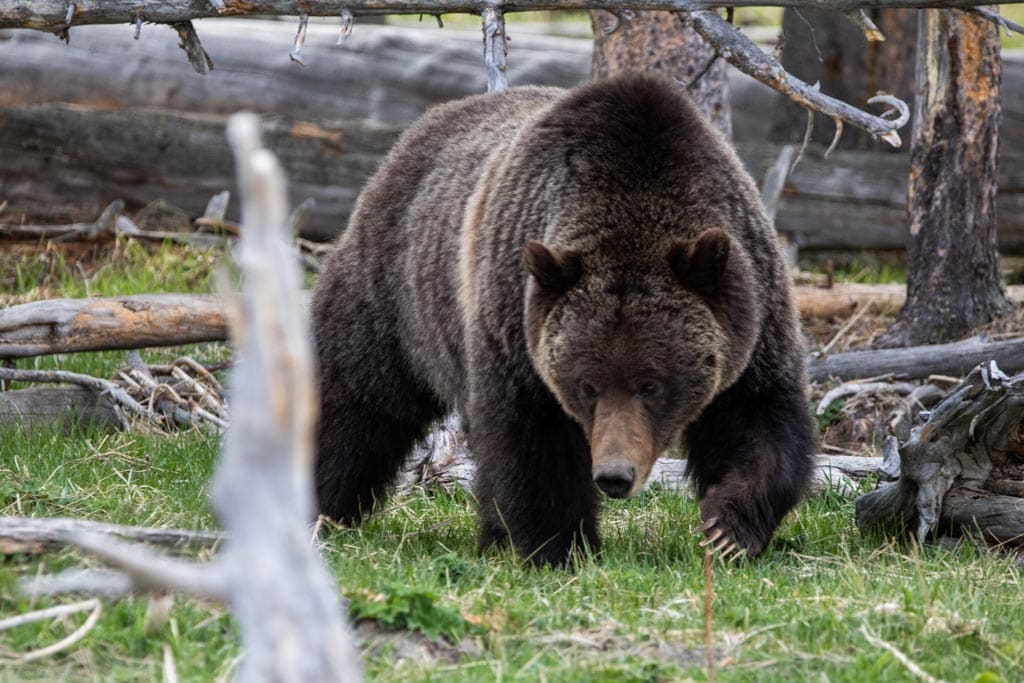
Bear Spray
Before anything else, your first line of defense should always be your bear spray. It is by far the most successful way to stop aggressive bears. Additionally, it’s non-lethal.
Bear spray can reduce the number of bears killed in self-defense or after a physical attack, as well as human injuries. Using it is a classic win-win situation.
Good Practices
- Know how to use your bear spray before heading into the backcountry.
- Practice using your bear spray with an empty can. Practice grabbing it, removing the safety with your thumb and spraying.
- Keep it accessible in a quick-draw holster, not stored somewhere in your backpack.
- It’s not necessary to be able to aim perfectly, putting up a screen of spray between you and the bear is often enough.
- Check the expiration of your bear spray and make sure it’s EPA-approved.
- Never use bear spray like you would insect repellent. Do not spray it around your campsite before going to sleep. It does not work that and might even attract wild animals to your site.
Using Bear Spray During a Bear Encounter
When you’re trying to scare off a charging bear, bear spray almost always does the trick. Make sure you know how to use your bear spray properly, though.
Bear attacks are split-second events. You should be able to use your spray on auto-pilot during a grizzly bear encounter.
- Remove the safety tag.
- Aim at the bear’s face and keep in mind the direction of the wind.
- Spray when a curious bear is 25-30 feet (8-10 meters) away.
- In case of a charging bear, spray when it is 30-60 feet (10-20 meters) away.
- Continue spraying until the bear leaves or changes direction.
- Spray directly into its face in case a bear is about to physically attack you.
- Get out of the area as quickly as possible, without running.
Best Places to See Grizzly Bears in the Wild
If, after all this, you’re a bit concerned about a potential grizzly bear encounter when going hiking in the backcountry, don’t be.
This post is simply to prepare you, inform you about what to do when encountering a grizzly bear while hiking. A bear sighting in the wild, there’s nothing like it.
While black bears live and can be spotted all over the U.S., grizzlies now only live in the northwestern states. And there are certain areas where the likelihood of seeing a grizzly bear is just that much higher.
Unsurprisingly, it’s America’s national parks where you need to be to have the best chances of seeing grizzlies in the wild.
Where to See Brown / Grizzly Bears
- Yellowstone National Park, Wyoming
- Grand Teton National Park, Wyoming
- Glacier National Park, Montana
- Denali National Park, Alaska
- Lake Clark National Park, Alaska
- Katmai National Park, Alaska
- …
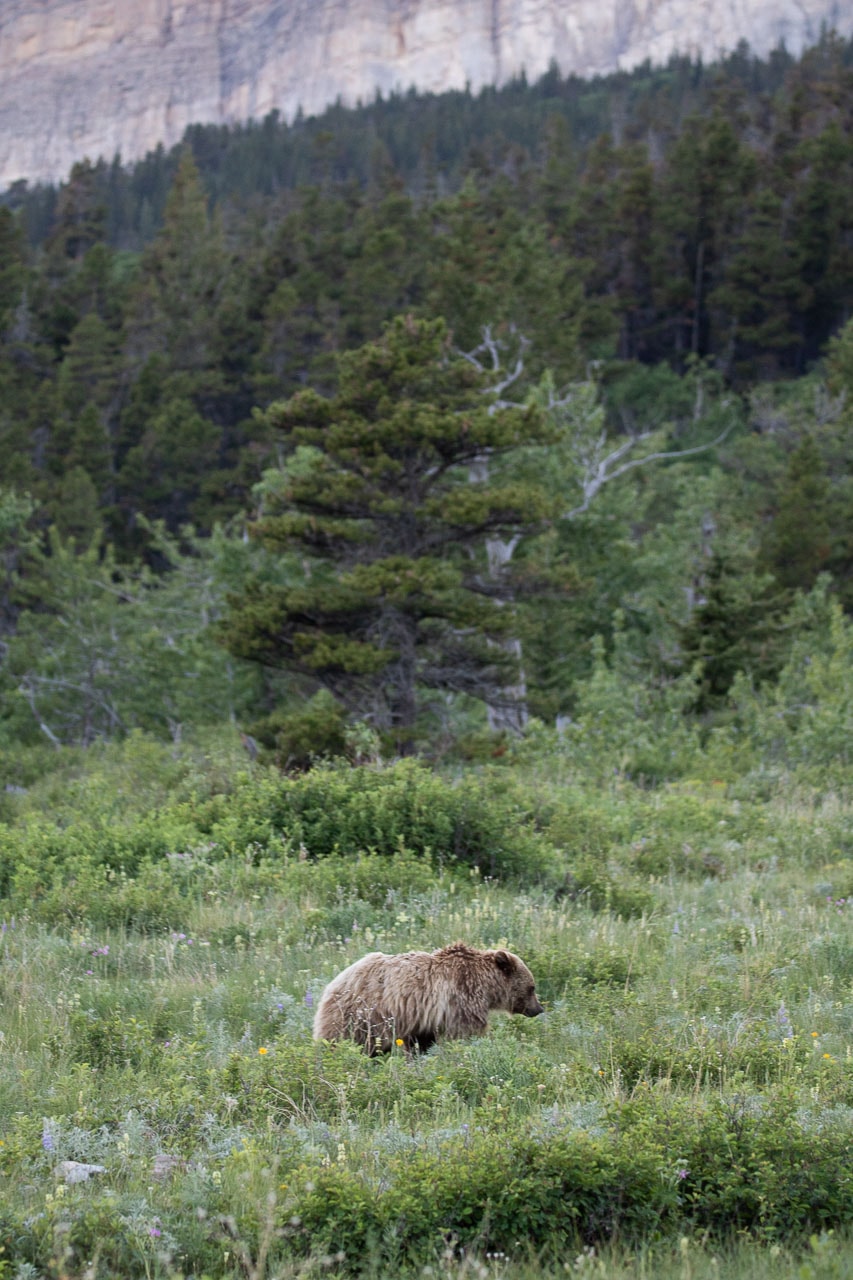
Hopefully, this elaborate post gave you a better understanding of how to behave and what to do during in grizzly bear encounter while hiking.
Now, go out and immerse yourself in nature’s most awe-inspiring landscapes—that’s where the bears hang out, too! Bring a first-aid kit, though, just in case.







Around June-July 1972 or 1973, while on a trail above and paralleling the Yellowstone river I walked into a standing grizzly on the same trail. There was a repeating pattern of long sweeping curves then a hairpin switch back to the left. The trsil was level but the terrain had a steep grade from above on the left and steeply down to the river far below on the right. You could not see around the hairpin turns as the hill went up to the left completely blocking the view of the trail.
Immediately on beginning to enter the turn there was a large grizzly standing with its nose up in the air. I was looking up at its head at about 45 degrees on a level trail. It was much taller than me I was 19 years old and I could not see either eye. I stayed completly motionless from the instant I saw it. Several seconds later It dropped to its left and went down the hill in the direction of the river fairly briskly. I remember hearing the repeated sound of snapping wood, like a baseball bat splitting. My sense was the bear never saw me. The bear’s fur on the back was flattened, matted with dry leaves, unkempt appearing. Looked like it had rolled on its back in a shallow muddy stream bed that was covered with leaves.
I was walking quietly, alone, no can with rocks as advised. My thinking was if I make noise I won’t see anything.
I wondered if the bear was blind at least on its right side because it dropped to its left from standing straight up in front of me and did not seem to see me. It was interesting that my instinct to freeze mid step, at least in that instance worked out.